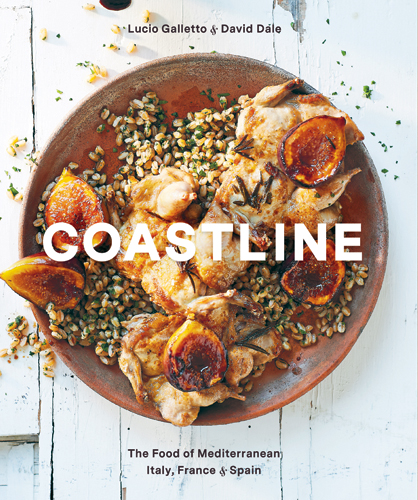
Coastline: The Food of Mediterranean Italy, France, & Spain
Tom Verde
Lucio Galletto and David Dale
2017, Interlink Books, 978-1-56656-026-9, $35 hb.
Arab merchants had as much to do with establishing what we now call “the Mediterranean diet” as did the Greeks, the Romans and even the Vikings, the authors of this colorful volume say. While often considered, historically, a “Roman lake,” the Mediterranean might be better described as a superhighway—of trade. For trade introduced eggplants, artichokes, almonds, lemons and even pasta, or inspired their widespread use, in the northwestern Mediterranean region. At one end were their sources—India, the Middle East and Central Asia—and in between were Arab traders. By introducing rice to Andalusia, Arabs laid “the groundwork for paella.” Sugar, “the Arab sweetening,” offered a more affordable alternative to pricey honey. Recipes reflecting these influences are featured throughout this elegant title, such as le riz aux cerises (cherry and almond rice pudding); paella Valencia, a saffron-infused blend of chicken, rabbit and snails; and even biscotti, an Italian favorite, studded with Arab staples: fig, almond and orange.
You may also be interested in...

Children’s Book Documents Rise of Umm Kulthum, Egypt’s Star of the East, As Declaration of National Identity
Illustrator Rhonda Roumani presents an illustrative biography of legendary Egyptian singer and cultural icon Umm Kulthum.
Asma Khan’s Monsoon Cookbook Reclaims Taste of Home—Our Book Review
Known for her all-female kitchen at London’s Darjeeling Express, Asma Khan transforms her new cookbook into a memoir, steeped in nostalgia.